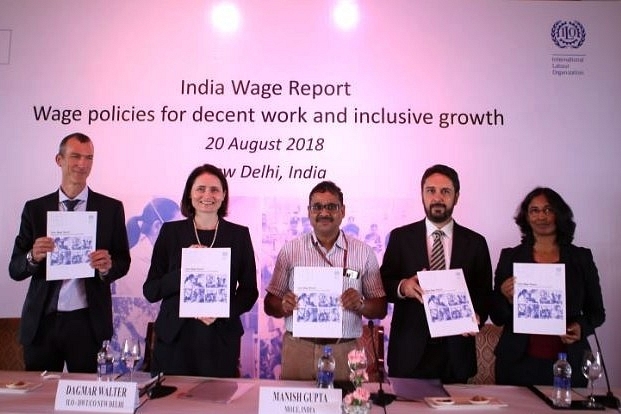
Real Wages Grew Twice Even As India’s GDP Grew Four Times Between 1993-2012 : ILO
International Labour Organisation (ILO) said that the real wages in India between grew twice during 1993-2012 even though the economy grew by four times during the period, Livemint has reported. Real wages are wages adjusted for inflation.
During the past two decades the gross domestic product (GDP) of India grew at an average of 7 per cent per year, which translates to a fourfold growth over two decades, ILO claimed in the India Wage Report.
Further, it added, “The India Wage Report shows that low pay and wage inequality remain a serious challenge to India’s path to achieving decent working conditions and inclusive growth.” Citing the National Sample Survey Organisation’s (NSSO) data, it said that real wages doubled during 1993-2012. It added that real wages grew faster in rural areas compared to urban areas.
The report had also found that 75 per cent of the workers receive a regular salary in India's urban areas but in rural areas 80 per cent of the workers are paid casually. In what could be a blow to India’s education system, it revealed that workers received the lowest salaries in this sector. Further, it added that the gender wage gap had reduced from 48 per cent to 34 per cent during the period.
“Average wages increased more rapidly for women than for men and rose faster in the unorganised than in the organised sector. These are all positive achievements. Nonetheless, low pay remains pervasive, and wage inequality is still very high. In 2011–12, the average wage in India was about 247 rupees (INR) per day, and the average wage of casual workers was an estimated INR 143 per day”, the report [PDF] said.